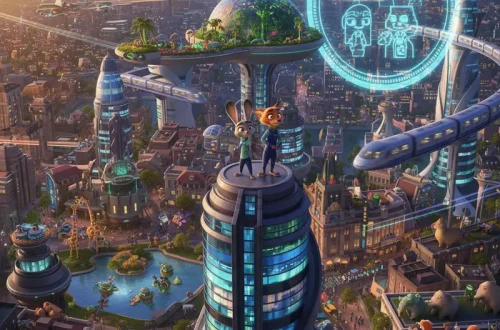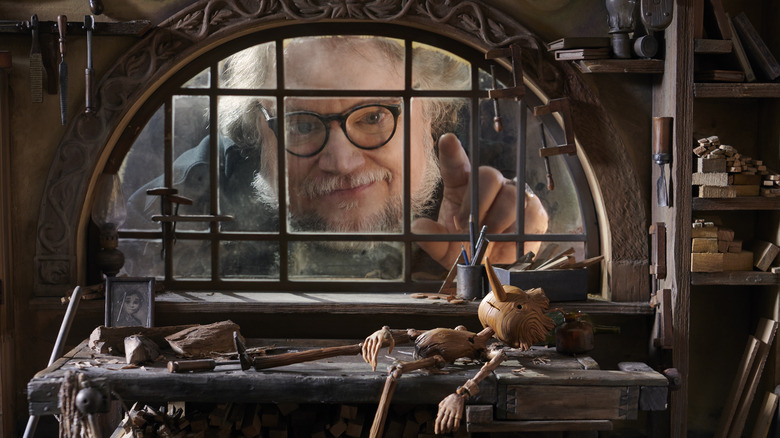
“In the Battle of Two Pinocchios, Guillermo del Toro’s Pinocchio Triumphs Over Disney’s Live-Action Remake”
Spoilers ahead for “Pinocchio”
Two Pinocchio movies from competing streaming platforms have garnered vastly different awards recognition in Los Angeles. “Guillermo del Toro’s Pinocchio,” co-directed by Mark Gustafson and available on Netflix, clinched the prestigious Academy Award for Best Animated Feature. In stark contrast, Disney’s live-action “Pinocchio,” directed by Robert Zemeckis and accessible on Disney+, was saddled with the unenviable Razzie Award for Worst Remake, Ripoff, or Sequel.
This intriguing showdown between the two Pinocchios swiftly led to a verdict, with voters deciding (within two days of each other) that del Toro managed to better encapsulate the wooden boy’s essence. Although both these films owe a debt to Walt Disney’s original 1940 animated adaptation of “Pinocchio” (which is also on Disney+), as well as Carlo Collodi’s classic children’s novel, “The Adventures of Pinocchio,” it’s fascinating how del Toro was able to craft a unique artistic vision that outshone the Disney remake.
“In Guillermo del Toro’s Pinocchio,” the puppet is imbued with a kind of immortality, capable of reanimation after death. The concept of Pinocchio being continually reborn has been explored on film multiple times. However, the version introduced in Disney’s “Snow White and the Seven Dwarfs” just prior to the United States’ entry into World War II remains the oldest extant rendition. Del Toro recalled how his mother took him to see a theatrical re-release of Disney’s “Pinocchio” when he was a child. He described it as the first film that truly captured the eerie and frightening aspects of childhood.
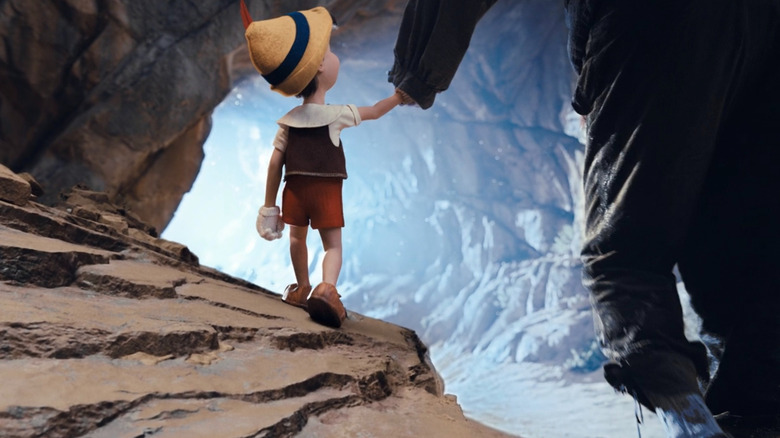
This childhood memory deeply influenced del Toro, and while he acknowledges Disney’s impact on him, he used his unique vision to surpass the Disney machine and its most recent in-house remake, starring Tom Hanks. Del Toro’s first step was recognizing that the puppet didn’t need to change his external appearance to become a real boy.
The core theme of inner beauty versus outer beauty is prominent in both “Guillermo del Toro’s Pinocchio” and Disney’s live-action version. While it might seem unfair to compare them, as they likely target different audiences, both 2022 Pinocchio films offer fresh perspectives on the timeless tale. Del Toro’s version dives deeper into the puppet’s inner struggles, while Disney’s emphasizes the importance of inner qualities.
Del Toro’s film excels in hand-drawn and stop-motion animation, creating a multi-dimensional world with textured visuals. David Bradley, who voices Geppetto, delivers a moving performance that connects emotionally with the audience. Del Toro’s adaptation is imbued with depth, showcasing Pinocchio as a work of art capable of defying death and leaving a lasting legacy.
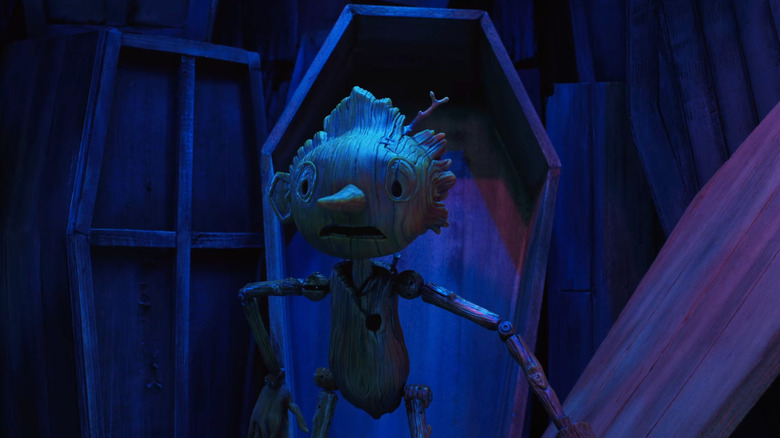
In contrast, Disney’s live-action “Pinocchio” retains much of the original puppet’s appearance. The 3D-printed, computer-generated Pinocchio lacks the vibrancy of the animated version, but Benjamin Evan Ainsworth’s voice acting brings him to life. However, the film falls short in fully conveying the spirit of the character, relying on CG transformations that feel cosmetic and don’t truly explore Pinocchio’s inner journey.
While both adaptations introduce new songs, del Toro’s film’s music, particularly “Ciao Papa,” stands out. Del Toro infuses his version with more emotional depth in the opening scenes, deepening the connection between Geppetto and Carlo.
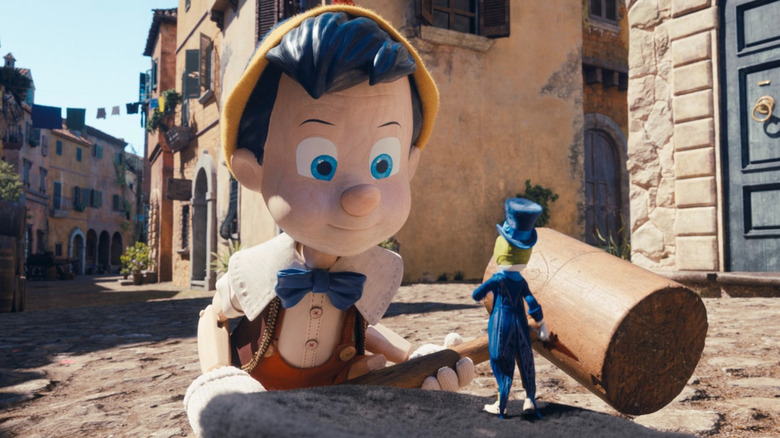
Ultimately, “Guillermo del Toro’s Pinocchio” explores themes of obedience to authority and the consequences of blind obedience to institutions like the church, the military, and show business. It provides a thought-provoking counterpoint to Disney’s “Pinocchio,” which emphasizes the power of wishes, the importance of conscience, and the value of taking initiative.
Both versions offer valuable interpretations of the story, leaving viewers to ponder which resonates more deeply with their beliefs. Disney’s “Pinocchio” inspires hope and nostalgia, while del Toro’s version delves into themes of mortality and the enduring power of art, challenging traditional narratives and exploring the complexity of human existence.
We bring out some of the most well-known Disney collection, all of which are available at reasonable costs. Visit our link now if you are interested in the Disney collection

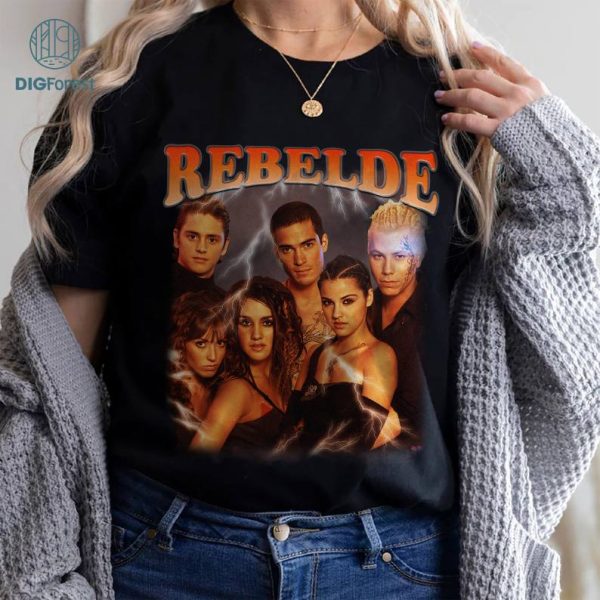
Snow White, Cinderella, Aurora, Ariel, Belle
